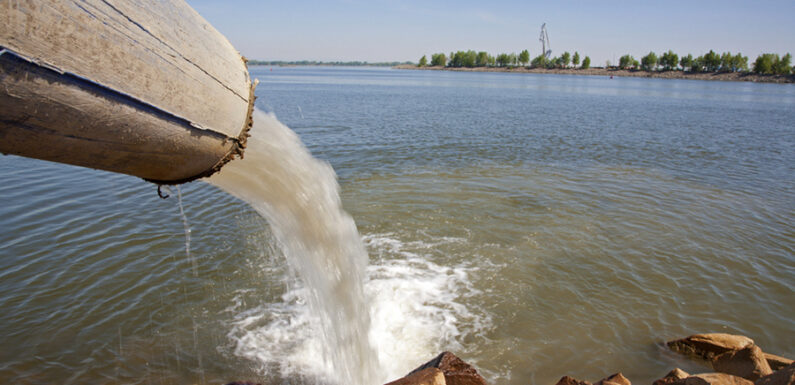For decades, Camp Lejeune, a military base in North Carolina, was a symbol of pride and protection. Yet, it’s also been the center of one of the most significant water contamination cases in U.S. history. From the mid-1950s to the mid-1980s, the water supply was tainted with harmful chemicals, affecting countless lives.
The impact of the water contamination at
Camp Lejeune has been profound. It’s estimated that nearly one million people may have been exposed to the contaminated water, leading to a myriad of health issues. The severity of the situation has led to numerous investigations, lawsuits, and a significant public health response.
This article delves into the details of the Camp Lejeune water crisis, its impact on the health of residents and personnel, and the ongoing efforts to seek justice and remediation for those affected.
History of Camp Lejeune
Established in the early 1940s, Camp Lejeune has served as a vital training ground for the United States Marine Corps. Located in North Carolina, it has accommodated over a million military personnel and their families throughout the decades.
During the 1950s to the 1980s, Camp Lejeune experienced a tragic water contamination incident. Unknown to the base’s inhabitants at the time, drinking water was being contaminated with harmful chemicals from on-base activities. The chemicals, such as trichloroethylene, tetrachloroethylene, and benzene, infiltrated the water system due to poor disposal practices and industrial leaks.
As a result, nearly a million people were unknowingly
exposed to the contaminated water. It wasn’t until the mid-1980s that the severity of the water contamination was uncovered. Despite the grave discovery, actions to address the contamination were staggeringly slow.
The long-term exposure to contaminated water led to devastating health effects among the base’s residents and personnel. Diseases such as leukemia, Parkinson’s disease, and non-Hodgkin lymphoma began emerging among those who had lived and worked there during the contamination period.
Since the revelation of this
public health crisis, an array of lawsuits, investigations, and health responses have been initiated to adequately address the problem and help those affected. The ongoing efforts strive to ensure justice and remediation, providing necessary care and support to those impacted at Camp Lejeune.
Water Contamination Timeline
Camp Lejeune’s water contamination crisis began unsuspectingly in the 1950s. It was during this period that harmful chemicals began seeping into the camp’s fresh water supply. The origin? Routine base activities. The primary culprits under suspicion were trichloroethylene and benzene, extremely toxic elements
known for their devastating effects on human health.
By the time 1980 rolled around, this contamination had gone unabated for approximately 30 years. During this time, almost a million unsuspecting people were being subjected to the tainted water of Camp Lejeune. An unimaginable toll to both the residents and personnel stationed there, the brewing health crisis was yet to reach its peak.
The mid-1980s marked the discovery of the contamination. Despite clear signs of the brewing disaster, the response to this threat was sluggish, to say the least. Neither immediate nor assertive enough, one could call it a disappointing reaction given the magnitude of the potential disaster.
Following the exposure of this contamination in the 1980s, the adverse effects of the unchecked water problem began rearing their ugly heads among the personnel and residents. Severe health issues like leukemia, Parkinson’s disease, and other related conditions ran rampant. This tragic health crisis confirmed the worst fears about the water’s toxicity.
By this period, the damage had been accrued over 30 years of unchecked toxic chemical exposure. The response was a mix of lawsuits, investigations, and medical support meant to alleviate the situation. However, the whiplash from this avoidable disaster continues to be felt by the thousands of personnel, their families, and residents who were exposed to this contaminant for decades.
Health Impacts of Contaminated Water
As the contaminated water crisis unfolded at Camp Lejeune, its direct impact manifested as severe health issues among its residents. These health issues were not only varied but also debilitating, spanning from immune system disorders to deadly cancers.
Exposure to the base’s contaminated water was linked to an alarming rise in leukemia cases, primarily among children. The afflicted had unknowingly consumed water laced with carcinogens for years, leading to this deadly consequence. The chronic exposure also significantly increased the chance of adults developing Parkinson’s disease, a progressive nervous system disorder that affects movement.
But these were not isolated medical conditions. Those impacted by the contaminated water at Lejeune faced an array of ailments. Liver disease was rampant among the base’s populace, while many also struggled with infertility issues. The toxic water had also led to high instances of miscarriages and birth defects among pregnant women and their unborn children, tarnishing the joy of expected motherhood with the cruel sting of loss and uncertainty.
The crisis had far-reaching social and psychological impacts, as well. It’s tricky to track or quantify human suffering, especially when it’s embedded in everyday life. For many at Camp Lejeune, their struggle wasn’t limited to the diseases but extended to their mental health. Frustration, anxiety, depression – the invisible traumas ran deep, indelibly marked by a crisis they hadn’t asked for.
As the stories of health issues related to the contaminated water started accumulating, the urgency to address the problems increased. But for many, the medical support and interventions came too late. Today, thousands still bear the scars of this catastrophe, serving as a stark reminder of the devastating health impacts of contaminated water.
Investigations and Lawsuits
Sparkling a flurry of investigations, the water crisis at Camp Lejeune demanded immediate scrutiny
Starting in the 1980s, there were
various inquiries into the cause of the water pollution and its possible health effects. The Agency for Toxic Substances and Disease Registry took on the scientific study of the contamination issue. They identified the primary toxins present, stating that they were likely in the water supply for at least 30 years.
| Agency |
Toxins Identified |
Year |
| The Agency for Toxic Substances and Disease Registry |
Benzene, TCE, PCE, Vinyl Chloride |
1980s |
Victims of the water contamination soon began to seek justice. Many filed lawsuits against the Department of Defense citing negligence. These claimants argued that they were not alerted to the contamination by military officials, leading to unexpected health troubles.
In the mid-2000s, a prominent law firm filed a number of lawsuits on behalf of the victims. These included a prominent case from a Marine Corps veteran and his wife, related to the early diagnosis of a rare form of leukemia in their young daughter.
In a sweeping move that rallied public sympathy, U.S Congress intervened. Legislation passed in 2012 recognized the plight of those affected by the crisis and offered relief to affected military personnel and their families. Termed “The Janey Ensminger Act”, it mandated lifetime medical care to anyone who lived on the base for at least 30 days between 1957 and 1987.
The lawsuits and the investigations shed light on a dire situation and offered some relief to those affected. However, the lasting impacts of the water contamination at Camp Lejeune continue. The victims are still dealing with health issues and medical care demands. The story of Camp Lejeune is a stark reminder of the need for vigilant environmental protection. It highlights the importance of expedient response when disasters occur.
Ongoing Efforts and Remediation
Looking ahead, efforts continue to rectify the wrongs wrought by the Camp Lejeune water crisis. It’s a multifaceted endeavor, tackling both the health and legal aspects, and working on environmental remediation actions.
Topping the list of priorities is ensuring proper medical care for those still suffering health consequences due to contaminated water exposure. Perpetual implementation of “The Janey Ensminger Act” remains paramount, with the law requiring the government to provide covered medical care for 15 specific illnesses associated with the water contamination.
Simultaneously, there’s a concerted push for legislative and policy changes based on lessons drawn from this water crisis. At the heart of such reforms is a call for prompter responses to environmental hazards, sterner sanctions for negligent entities, and more protective measures for military and civilian personnel alike.
On the end of environmental remediation, the Department of Defense recognizes that maintaining base water supplies demands more than just daily operation. The aftermath of contamination compels them to restore and upgrade the water system infrastructure, ensure constant monitoring of water quality, and train operation and maintenance personnel regularly. They’ve undertaken several projects to address these components, reportedly, with significant progress.
To better illustrate the complexity and enormity of the ongoing efforts at Camp Lejeune, consider the following data:
| Task |
Brief Status Update |
| Medical aid via “Janey Ensminger Act” |
Continuous provisioning |
| Legislative reforms |
Still a work in progress |
| Environmental remediation projects |
Some completed, some ongoing |
Taken in all, the process of
restoring normalcy and dignity for those affected by the Camp Lejeune crisis is a hefty task. The broader narrative continues to unfold, offering plenty of context and lessons for environmental protection and management. The tale underscores the detrimental effects of negligence, particularly in issues concerning basic human needs like clean, drinkable water. While we’ve made strides, the journey is far from over.
Conclusion
The Camp Lejeune water crisis has shed light on the critical need for proactive environmental management and stringent legislation. The Janey Ensminger Act signifies an important step towards providing healthcare for those impacted, yet it’s just the start of a long journey. The Department of Defense’s remediation projects are pivotal in restoring water quality and infrastructure. However, they also highlight the extent of the challenge ahead. This crisis serves as a stark reminder of the importance of swift response to environmental hazards and the dire consequences of negligence. It’s a call to action for stronger sanctions and more robust measures to prevent such disasters in the future. The road to restoration may be long, but it’s a path that must be tread with diligence, accountability, and a commitment to safeguarding the environment.


